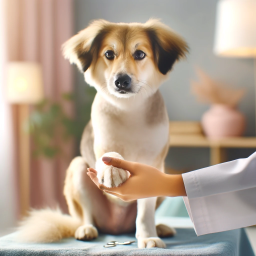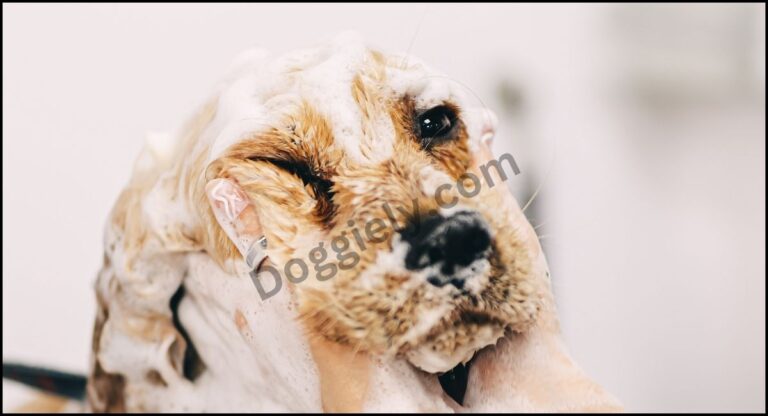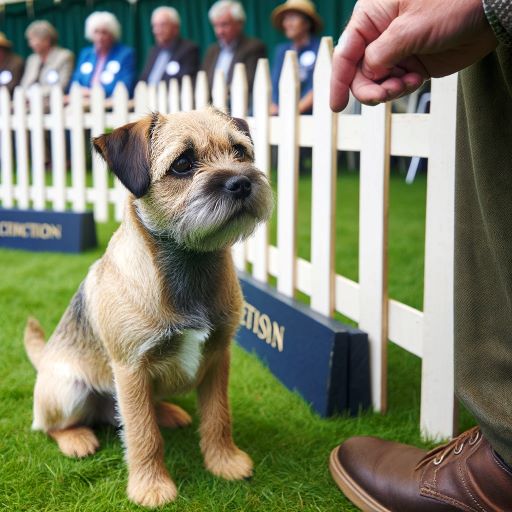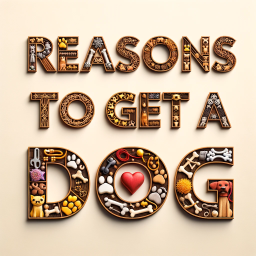Can I Walk My Dog After Cutting The Quick?

Can I Walk My Dog After Cutting The Quick? To know in details, read our full article.
Dog ownership is a journey filled with rewarding moments, but it also comes with responsibilities that extend beyond the basics of food, shelter, and love.
One often-overlooked aspect of canine care is nail maintenance. Trimming a dog’s nails is a crucial part of their overall well-being, but it can be a delicate task, with a potential pitfall: cutting the quick.
In this article, we’ll explore the ins and outs of this essential grooming practice, answer the popular question of ‘’can I walk my dog after cutting the quick?’’ and learn how to master it while ensuring your dog’s comfort and safety.
Can I Walk My Dog After Cutting The Quick?

The Importance of Nail Care
Proper nail care is not just about aesthetics; it’s essential for your dog’s health. Overgrown nails can lead to discomfort, pain, and even orthopedic issues. Long nails can alter a dog’s gait, causing joint problems and difficulty walking. That’s why regular nail trimming is a must.
Understanding the Quick Cutting
To become a proficient nail groomer, it’s crucial to understand the anatomy of a dog’s nail. The quick is a sensitive, pinkish tissue that runs through the center of each nail. It contains blood vessels and nerves. Cutting into the quick can cause bleeding, pain, and anxiety for your dog.
Tools of the Trade: Before embarking on your nail trimming journey, ensure you have the right tools. A high-quality pair of dog nail clippers is essential. There are various types available, including guillotine-style and scissor-style clippers. Choose the one that suits your comfort and your dog’s nail size and shape.
Technique Matters
The key to preventing a quick-cutting mishap is to develop proper nail trimming technique. Here are some essential steps to follow:
- Inspect the Nail: Examine the nail closely and identify the quick. In dogs with light-colored nails, the quick is usually visible as a pinkish area. In dogs with dark nails, the quick is harder to see, so caution is paramount.
- Take It Slow: Trim a tiny bit at a time. Gradually work your way towards the desired length. Avoid taking off too much in one go, as this increases the risk of cutting the quick.
- Use Gentle Pressure: When you apply pressure on the clippers, do so gently. This allows you to feel the density of the nail and the proximity to the quick.
- Stay Calm: Dogs can sense their owner’s anxiety. If you’re nervous, your dog is likely to be as well. Approach the task calmly and confidently. If your dog becomes anxious or aggressive, take a break and try again later.
- Have Styptic Powder Handy: Accidents can happen. If you accidentally cut the quick and there’s bleeding, styptic powder or a styptic pencil can help stop it quickly.
Dealing with Accidental Quick Cutting in Dogs
As a dedicated dog owner, you’re probably no stranger to the joys and responsibilities that come with canine companionship. One such responsibility that demands attention and care is nail grooming. While it may seem like a straightforward task, the world of dog nail trimming can be fraught with pitfalls, and one of the most feared among them is the accidental cutting of the quick. It can lead to bleeding, discomfort, and, understandably, distress for your beloved pet. However, it’s a mishap that can happen to even the most cautious pet owners.
Common Causes
Accidental quick cutting can be attributed to various factors, including:
- Dark Nails: Dogs with dark-colored nails make it challenging to spot the quick, increasing the risk of inadvertent cuts.
- Overgrown Nails: Nails that have been allowed to grow too long can have an extended quick. Trimming them requires extra caution.
- Inexperienced Grooming: If you’re new to nail trimming or not confident in your technique, the likelihood of an accident increases.
Immediate Response
If you find yourself in the unfortunate situation of having cut your dog’s quick, here’s what you should do:
- Stay Calm: Your dog will pick up on your emotions. Staying composed will help keep them calm as well.
- Assess the Damage: Examine the nail to determine the severity of the cut. If it’s a minor nick with minimal bleeding, you can likely manage it at home.
- Apply Styptic Powder: This is a must-have in your pet grooming kit. Gently apply styptic powder to the affected area. It helps stop the bleeding and promotes clotting.
- Monitor Your Dog: Keep an eye on your furry friend for any signs of distress, such as excessive bleeding, limping, or whining. If these symptoms persist, contact your vet promptly.
- Distraction and Comfort: Offer your dog their favorite toys or treats to keep them distracted and comforted during the healing process.
When to Seek Veterinary Help
While minor quick cuts can usually be managed at home, some situations require professional attention:
- Excessive Bleeding: If the bleeding doesn’t stop after applying styptic powder or continues for an extended period, consult your vet.
- Signs of Infection: Watch for signs like swelling, discharge, or increased sensitivity around the injured nail. These could indicate an infection that needs medical attention.
- Behavioral Changes: If your dog exhibits unusual behavior or seems to be in significant pain, it’s best to consult your vet for a thorough evaluation.
Preventing Future Mishaps
To minimize the risk of accidentally cutting the quick in the future, consider these tips:
- Regular Trimming: Trim your dog’s nails regularly to keep them at an appropriate length. This helps prevent overgrown quicks.
- Proper Tools: Invest in quality dog nail clippers and become familiar with their use. There are different types, so choose one that suits your comfort and your dog’s nail type.
- Know Your Dog’s Nails: Dark nails require extra caution. Shine a flashlight through them to illuminate the quick before trimming.
FAQ
can i walk my dog after cutting the quick?
The answer depends on several factors:
- Severity of the Cut: If it’s a minor nick and bleeding has stopped, a short walk for bathroom breaks might be acceptable.
- Comfort Level: Observe your dog’s behavior. If they seem comfortable and not in pain, a gentle stroll around the block for some fresh air may be fine.
- Walking Surface: Opt for a soft, grassy area rather than a hard surface like pavement to minimize potential discomfort from the injured nail.
- Monitoring: During the walk, keep a close watch on your dog’s paw and overall demeanor. If they appear distressed, favoring the injured paw, or if bleeding resumes, return home immediately.
Exercise Alternatives
If walking isn’t an option or your dog needs to avoid pressure on the injured paw, consider alternative ways to provide mental and physical stimulation:
- Indoor Play: Engage in interactive indoor games and activities that don’t put strain on the injured paw.
- Mental Stimulation: Puzzle toys and training sessions can provide mental exercise without the need for physical exertion.
Consult Your Veterinarian
It’s important to consult with your veterinarian for guidance tailored to your dog’s specific situation. They can assess the injury, provide advice on when it’s safe to resume regular walks, and ensure proper healing.
Conclusion
Accidentally cutting the quick is a common grooming mishap, but it doesn’t mean you have to put your dog’s exercise routine on hold indefinitely.
With care, attention, and proper monitoring, you can determine when it’s safe to resume walking your beloved companion while ensuring their comfort and well-being.
Remember, patience and a watchful eye are your best allies during the recovery process, and your dog will appreciate your loving care throughout this minor setback. I hope you have known about this topic: Can I Walk My Dog After Cutting The Quick?
faq
How long does dog quick take to heal?
If a dog’s quick is cut, it typically heals in a few days to a week, provided it’s kept clean and the dog is calm.
Can a cut quick get infected?
A cut quick can become infected if bacteria enter the wound, especially if it’s not cleaned or if the dog licks it excessively.
Will my dog forgive me for cutting the quick?
Dogs don’t hold grudges like humans, so while cutting the quick may cause temporary stress, your dog will forgive you with time and trust.
What happens if you cut a dog’s quick too short?
Cutting a dog’s quick too short can result in bleeding and pain. If bleeding continues or signs of infection appear, consult a vet.
Related Posts:
Read More: Why Does My Dog Open His Mouth When I Pet Him? 7 Reasons
Read More: Why Does My Dog Keep Sniffing My Legs: 5 Common Reasons
Read More: Why Does My Dog Bite Me In The Morning? 2 Way To safe From
Read More: Why Are My Dogs Balls Black? Best Number 1 Answer
Read More: Why Do Dogs Like Peanut Butter?
Read More: Why Does My Dog Nibble My Ear? 10 Reasons
Read More: Why Does My Dog Move Its Bed Around?
Read More: Why Does My Dog Bring Me His Food?
Read More: Why Does My Dog Lay His Head Over My Neck? 7 Reasons
Read More: Dog Tails: Exploring the Significance In Dog’s Life





